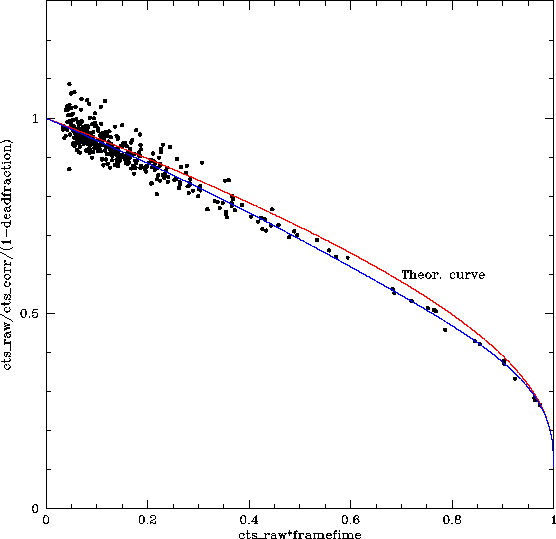Next: 3.5.7 OM distortion Up: 3.5 OPTICAL MONITOR (OM) Previous: 3.5.5 OM sensitivity and detection limits
To avoid damage of the OM photocathode, the maximum allowed source
brightness is set to a count rate of  19,000 photons/s, corresponding
to an m
19,000 photons/s, corresponding
to an m = 7.4 mag A0 star in the V filter. The equivalent brightness
limits for the other filters and optical elements are tabulated in
Table 25. For calculating the brightness limits an A0
type spectrum was assumed.
Similarly, a maximum count rate of 190,000 photons/s is allowed during
the V-filter field acquisition at the start of observation.
Moreover, the maximum allowed dose during an OM observation is
= 7.4 mag A0 star in the V filter. The equivalent brightness
limits for the other filters and optical elements are tabulated in
Table 25. For calculating the brightness limits an A0
type spectrum was assumed.
Similarly, a maximum count rate of 190,000 photons/s is allowed during
the V-filter field acquisition at the start of observation.
Moreover, the maximum allowed dose during an OM observation is  photons
in the innermost 3'.5 and 5
photons
in the innermost 3'.5 and 5 10
10 photons outside. This puts some
constraints not only on the properties of the sources in the OM field
but also on the maximum exposure time.
The expected dose can be calculated making use of the count
rates listed in Table 20.
photons outside. This puts some
constraints not only on the properties of the sources in the OM field
but also on the maximum exposure time.
The expected dose can be calculated making use of the count
rates listed in Table 20.
| Filter | Max. m |
| V | 7.3 |
| U | 7.7 |
| B | 8.6 |
| White | 9.6 |
| UVW1 | 6.8 |
| UVM2 | 5.6 |
| UVW2 | 4.6 |
| Grism 2 (opt.) | 9.6 |
| Grism 1 (UV) | 8.7 |
The brightness limit for the UV grism is imposed by the zero order. As stated in Section § 3.5.3.2, this grism is not blazed and therefore a lot of energy is concentrated in its zero order. This can make optically bright cool stars not observable, even if they are faint in the UV, because their visible light comes out in the zero order. In other words the limits for the grisms cannot be scaled with the spectral type.
These limits are related to the safety of the instrument. Bright objects, even if they are permitted, can produce poor results due to coincidence losses since the correction applied by SAS becomes uncertain for high count rates (see Section § 3.5.5).
If an optically bright source beyond these limits is anywhere in the OM
FOV (not just within an active science window!), users should not include
OM exposures in their observation. It is
the user's responsibility to check for the presence of such bright
sources.
The user is recommended to check the Guide Star Catalogue
at the URL:
http://archive.eso.org/gsc/gsc
The impact of the sources that are present in a given field with respect to the OM brightness and dose limits can be checked through the function “Technical Evaluation" in XRPS.
European Space Agency - XMM-Newton Science Operations Centre